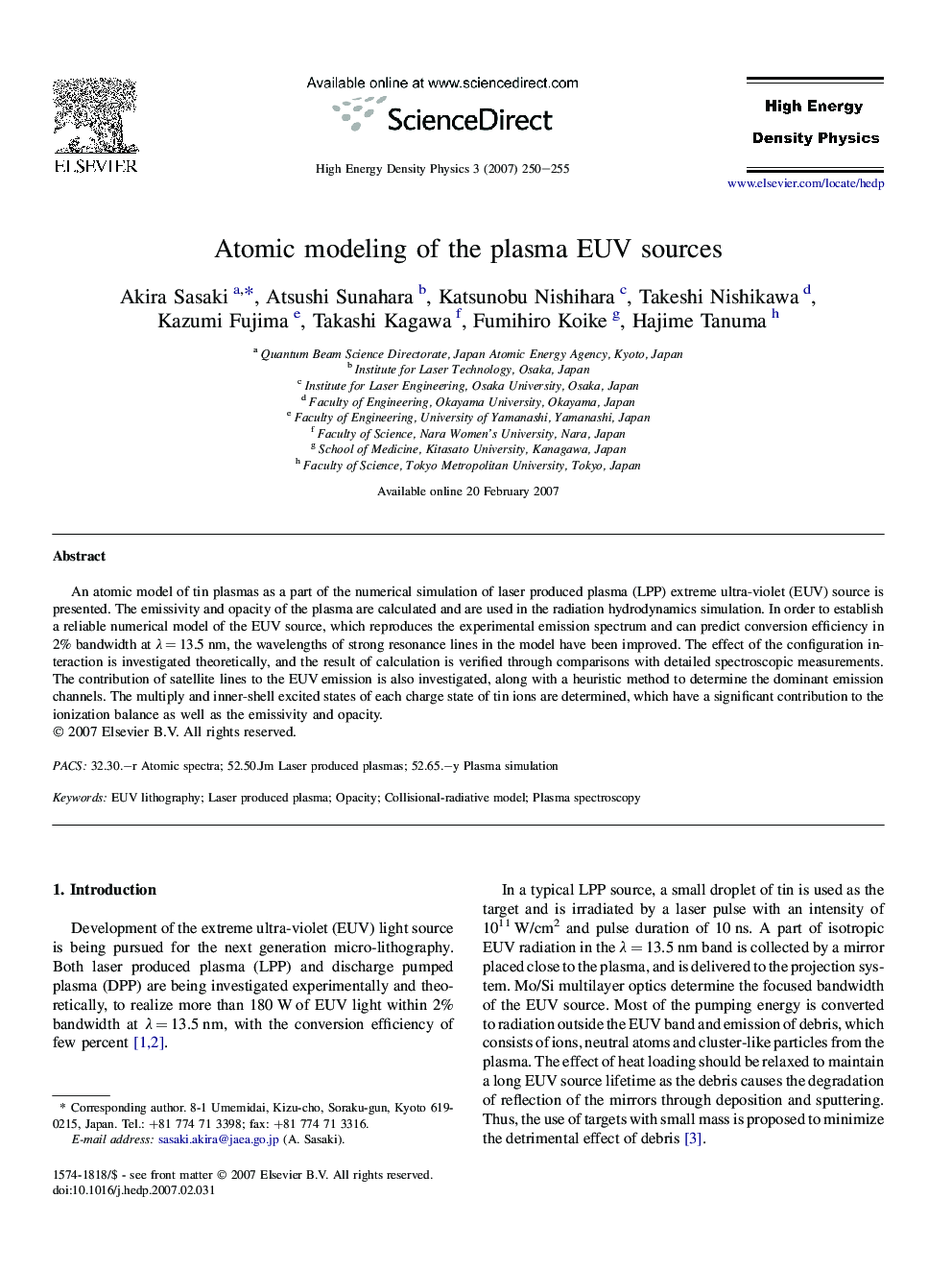| Article ID | Journal | Published Year | Pages | File Type |
|---|---|---|---|---|
| 1772868 | High Energy Density Physics | 2007 | 6 Pages |
An atomic model of tin plasmas as a part of the numerical simulation of laser produced plasma (LPP) extreme ultra-violet (EUV) source is presented. The emissivity and opacity of the plasma are calculated and are used in the radiation hydrodynamics simulation. In order to establish a reliable numerical model of the EUV source, which reproduces the experimental emission spectrum and can predict conversion efficiency in 2% bandwidth at λ = 13.5 nm, the wavelengths of strong resonance lines in the model have been improved. The effect of the configuration interaction is investigated theoretically, and the result of calculation is verified through comparisons with detailed spectroscopic measurements. The contribution of satellite lines to the EUV emission is also investigated, along with a heuristic method to determine the dominant emission channels. The multiply and inner-shell excited states of each charge state of tin ions are determined, which have a significant contribution to the ionization balance as well as the emissivity and opacity.
